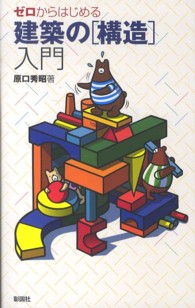Full Description
This interdisciplinary book uses key examples and specific case studies from the 'Trailblazers' of Anglia Ruskin University, UK, to address the successes and challenges experienced during the creation, development, and running of breadth modules. It's been carefully written to support anyone looking to implement this innovative method into their own university setting.
With content informed by the United Nations Sustainable Development Goals, and using active learning pedagogies, interdisciplinary student teams work together to develop sustainable solutions, allowing for the growth of skills vital for enhancing student employability. The chapters are grounded in theory, making the discussions transferable to a wide readership interested in interdisciplinary approaches at the higher education level. The theoretical underpinnings of the discussions in each chapter will open up questions relating to contemporary issues such as diversity and representation, poverty and sustainability, artificial intelligence, and social justice.
This is a must-read text for anyone seeking to implement similar breadth modules at their institutions, or considering how to develop strategies that address whole institution questions such as sustainability and employability.
Contents
Part One: Introduction and Context 1. Introduction 2. Disciplinarities 3. Transformative Education 4. Introduction to Ruskin Modules 5. Creativity and Design for Innovative Interdisciplinary Education: The case of the Ruskin Module Open Studios Part Two: Case Studies 6. To Team or Not to Team: Embedding Interdisciplinarity into the Curriculum 7. A Ruskin Module: From Idea to Implementation 8. Blurred and En-Tangled Boundaries: A case for Interdisciplinarity and Diversification 9. Undergraduate Learners as Emerging Agents of Sustainability and Environmental Justice 10. Ruskin Module and Community Organising 11: Developing Professional Learning through an Interdisciplinary Community of Practice 12. The Humanistic Temperament: Reflections on the Ruskin Module, AI and the Future 13. Interdisciplinary Learning Design 14. Conclusion







